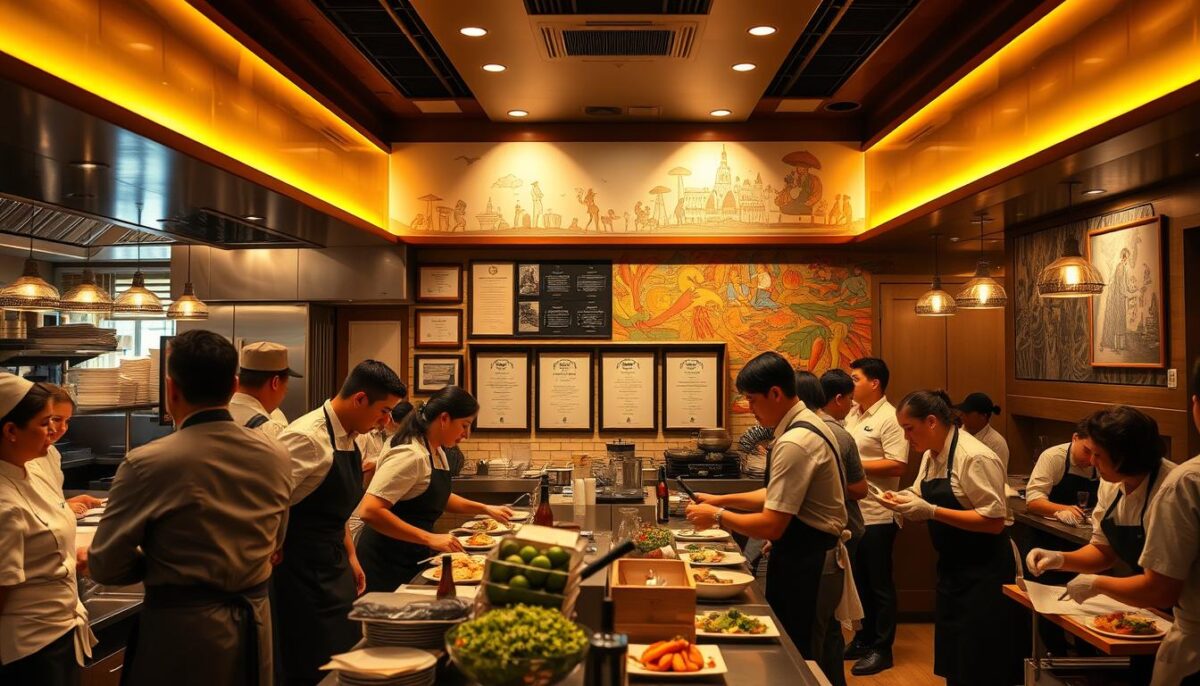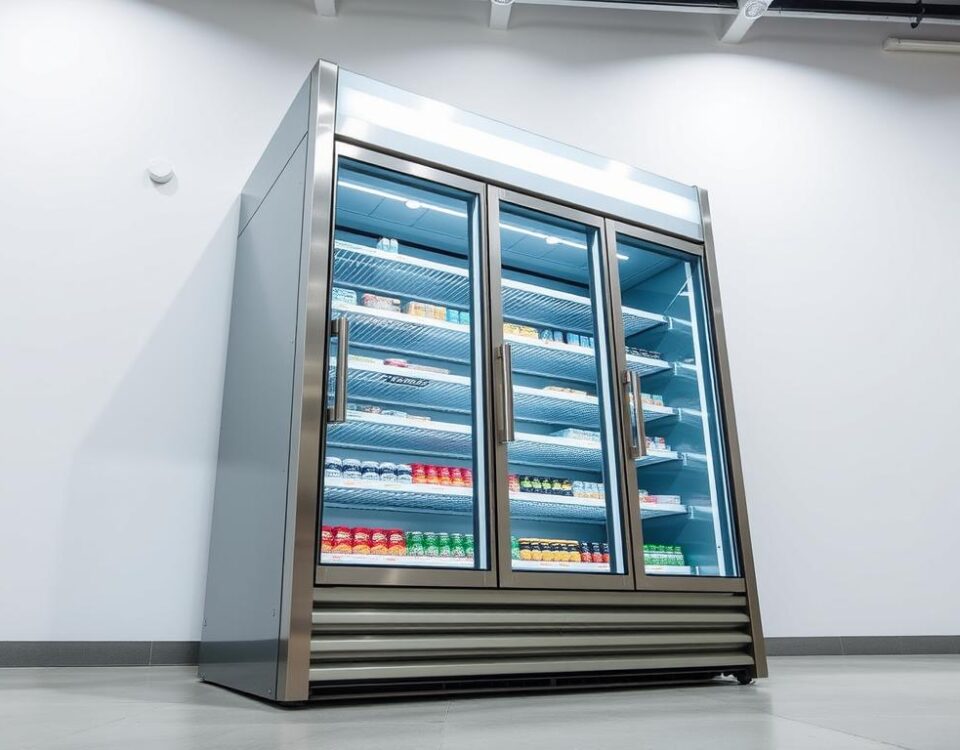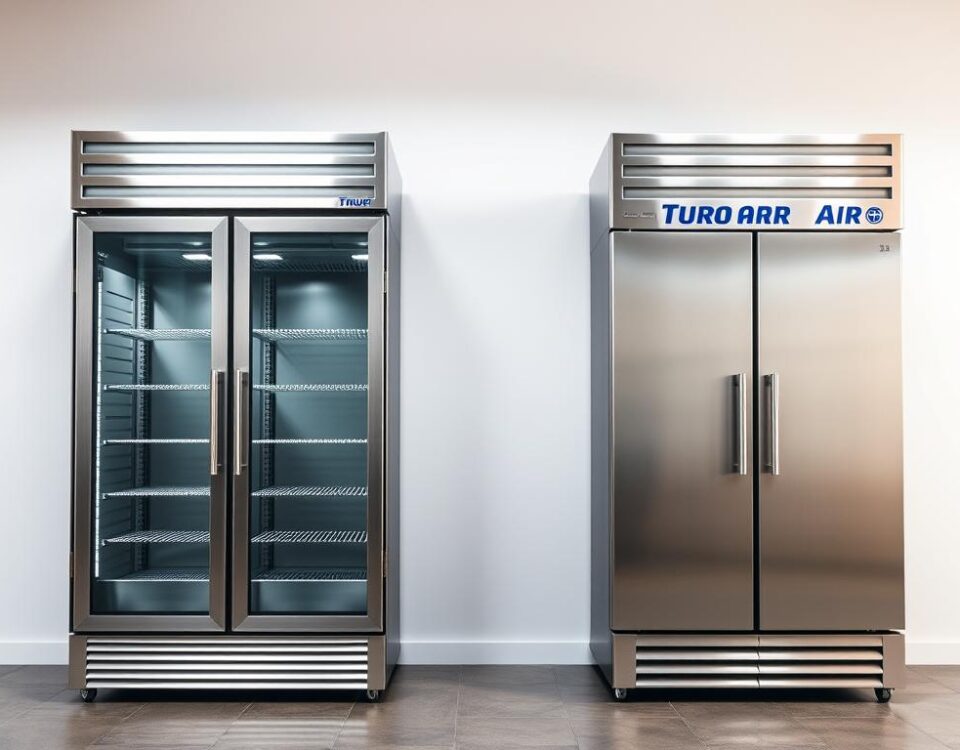
Top 7 Restaurant Payment Systems in 2026
August 4, 2025
How to Master TikTok Marketing for Restaurants in 2025
August 5, 2025I’ve seen firsthand how the restaurant industry has been hit hard by high turnover rates, with many establishments struggling to maintain adequate staffing levels. According to the National Restaurant Association, despite recent gains, restaurants are still 450,000 jobs below their pre-pandemic staffing levels. This staggering statistic highlights the urgency of finding effective employee retention strategies.
As a restaurant operator, you know that keeping quality staff can make or break your business. In this article, I’ll share six proven strategies that have worked effectively for restaurants across the United States. By implementing these strategies, you can reduce turnover and build a loyal team that will improve your guest experience and bottom line.
Key Takeaways
- Effective strategies to improve staff loyalty
- Practical advice to reduce employee turnover
- Methods to enhance your guest experience
- Techniques to build a loyal team
- Actionable tips to improve your bottom line
The Restaurant Turnover Crisis: Understanding the Problem
Understanding the restaurant turnover crisis is crucial for business owners to mitigate its impact. The high rate of employee turnover in the US restaurant industry is a significant concern.
Current State of Restaurant Employee Turnover in the US
The restaurant industry in the US is experiencing a high turnover rate, with significant financial implications for businesses. According to industry experts, the cost of replacing an employee can range from 33% to 200% of their annual salary.
The Real Cost of High Employee Turnover
The real cost of turnover is often estimated to be between 33% to two times the employee’s annual salary. This cost includes both hard costs, such as recruitment and training, and soft costs, like lost productivity and decreased team morale.
| Cost Component | Percentage of Total Turnover Cost |
|---|---|
| Soft Costs (lost knowledge, productivity) | 67% |
| Hard Costs (recruitment, training) | 33% |
High employee turnover not only wastes time and money but also affects the overall performance of the business. By understanding the root causes of turnover, restaurant owners can develop effective strategies to retain employees and improve their bottom line.
Why Restaurant Staff Retention Matters More Than Ever
As a restaurant operator, I’ve seen firsthand how staff retention directly impacts the overall performance and profitability of the business. Retaining skilled and experienced staff is crucial for maintaining consistency in service and quality, which in turn affects customer satisfaction and loyalty.
The consequences of not retaining staff are far-reaching, impacting both the financial and operational aspects of the restaurant.
Financial Impact of Employee Turnover
The financial burden of employee turnover is substantial, with significant costs associated with hiring time and training time. Writing job descriptions, creating advertisements, and interviewing candidates consume a considerable amount of time—and, as any business owner knows, time is money. Moreover, once new employees are hired, training them can be expensive, as seasoned staff members must dedicate part of their day to helping newcomers.
Operational Challenges of Constant Rehiring
The operational challenges of constant rehiring are just as daunting. I’ve witnessed how the cycle of rehiring creates significant operational disruptions. When experienced staff leave, restaurants struggle to maintain consistent service standards, as valuable knowledge and experience walk out the door. The remaining staff bear the training burden, leading to a domino effect of stress and reduced efficiency. This can result in declining guest satisfaction as service inconsistencies become more noticeable.
Why Restaurant Employees Leave: Root Causes
Restaurant employees are leaving their jobs due to a combination of industry-specific challenges and changing workplace expectations. The post-pandemic era has brought about significant changes in how employees perceive their jobs and work environments.
Industry-Specific Challenges
The restaurant industry is known for its high-pressure environment, where employees often face long hours, low wages, and limited benefits. Industry-specific challenges such as inflation, supply chain disruptions, and staff shortages further exacerbate the stress on employees, making it difficult for them to provide the expected level of service.
Post-Pandemic Workplace Expectations
The pandemic has led to a shift in employee expectations, with many reassessing their priorities and seeking greater work-life balance. As noted by industry observers, “The labor market changes have empowered workers with more employment options, making it easier for them to leave restaurant jobs for opportunities in other industries with more predictable hours and benefits.”
| Challenge | Pre-Pandemic | Post-Pandemic |
|---|---|---|
| Work-Life Balance | Limited flexibility | Increased demand for flexibility |
| Compensation | Low wages | Increased expectation for fair compensation |
| Work Environment | High stress | Increased demand for respect and safety |
These changes indicate a need for the restaurant industry to adapt to new workplace expectations and address the root causes of employee turnover.
Strategy 1: Create a Positive and Supportive Work Culture
Creating a positive work culture is the foundation of a loyal restaurant team. A supportive work environment encourages employees to perform at their best and fosters a sense of belonging.
Establishing Clear Core Values
To establish a positive work culture, it’s crucial to define clear core values that resonate with your staff. These values should reflect the mission and vision of your restaurant, guiding how employees interact with each other and with customers.
Building a Respectful Team Environment
Building a respectful team environment involves recognizing the dignity and importance of every role. As I’ve seen, small gestures like staff shout-outs or compliments from management can significantly boost morale. Implementing a zero-tolerance policy for harassment and bullying is also essential. Regular team bonding activities outside of service hours can help build connections that make employees want to stay.

By focusing on these aspects, you can create a work environment where every staff member feels valued and respected, leading to a more loyal and dedicated team.
Strategy 2: Offer Competitive Compensation and Benefits
In the competitive restaurant industry, attractive compensation packages can make all the difference in employee retention. While base wages are essential, it’s the additional benefits and creative compensation models that often tip the scales in favor of one restaurant over another.
Beyond Basic Wages
Creative compensation models can include profit-sharing plans, performance-based bonuses, or other incentives that reward employees for their hard work. These models not only motivate staff but also foster a sense of ownership and commitment.
Benefits That Matter
Some benefits that are particularly valued by restaurant workers include:
- Healthcare Contributions: Even partial coverage can be a powerful incentive.
- Staff Meals or Discounts: Free or discounted meals during shifts foster camaraderie and reduce personal expenses.
- Paid Time Off (PTO): Reliable PTO policies show respect for staff well-being and help reduce burnout.
By offering these benefits, restaurants can significantly improve retention strategies and reduce turnover.
Strategy 3: Provide Meaningful Growth and Development Opportunities
One effective strategy for reducing turnover is to invest in the future of your employees through training and development programs. By doing so, you not only enhance their skills but also demonstrate your commitment to their career advancement.
Creating Clear Career Paths
Employees are more likely to stay with a restaurant when they see a clear path for advancement. This involves identifying potential career progression paths within your organization and communicating these opportunities to your staff.
Cross-Training and Skill Development Programs
Cross-training is an effective way to foster versatility and confidence among employees. For instance, a barback can learn basic bartending skills, or a line cook can shadow a sous chef. This approach not only broadens their understanding of the restaurant’s operations but also prepares them for future roles.
| Training Program | Benefits |
|---|---|
| Cross-Training | Enhances versatility, reduces scheduling conflicts |
| Mentorship | Boosts morale, accelerates skill development |
| Workshops | Provides specialized skills, demonstrates investment in employee growth |
Strategy 4: Prioritize Work-Life Balance
In the demanding world of restaurants, supporting employees’ work-life balance can significantly reduce turnover. Ensuring that staff have a healthy balance between their work and personal life not only improves their well-being but also enhances their productivity and job satisfaction.
Smart Scheduling Practices
Implementing smart scheduling practices is crucial. This includes creating schedules that are fair, predictable, and flexible enough to accommodate employees’ needs. By doing so, restaurants can reduce the stress associated with unpredictable shifts.
Preventing Burnout in High-Pressure Environments
Preventing burnout is essential in high-pressure environments like restaurants. Encouraging reasonable breaks, creating dedicated staff areas, and monitoring for signs of burnout can help mitigate its effects. As I’ve witnessed, employee burnout often leads to turnover, but proactive measures can significantly lower this risk.
By prioritizing work-life balance, restaurants can build trust with their employees, showing that they care about their well-being beyond just their work. This approach not only reduces turnover but also fosters a positive and supportive work culture.
Strategy 5: Recognize and Reward Excellence
Recognizing and rewarding excellence is a crucial strategy for retaining top talent in the restaurant industry. By acknowledging employees’ hard work and achievements, restaurants can demonstrate their appreciation for their staff’s dedication and hard work.
Meaningful Recognition Programs
Implementing meaningful recognition programs is essential for boosting staff morale and motivation. This can be achieved by creating a calendar of work anniversaries and birthdays to ensure these important dates are consistently acknowledged. Anniversary acknowledgments, such as a card or a small gift, reaffirm that employees’ long-term dedication doesn’t go unnoticed.
Celebrating Milestones and Achievements
Celebrating staff achievements is vital for creating a positive work environment and encouraging loyalty. This can include recognizing tenure milestones, such as 6 months, 1 year, or 5 years, with increasing significance. Publicly recognizing staff achievements reinforces the restaurant’s commitment to their growth and success.
| Recognition Type | Milestone | Reward |
|---|---|---|
| Work Anniversary | 1 year | Small gift |
| Tenure Milestone | 5 years | Substantial recognition |
| Performance Achievement | Completing training | Public recognition |

Strategy 6: Implement Effective Restaurant Employee Retention Strategies
Implementing effective restaurant employee retention strategies is crucial for the success of any restaurant business. By doing so, restaurants can foster a positive work environment that encourages staff to stay and grow with the company.
Open Communication Channels
Open communication is key to resolving issues promptly and maintaining trust between management and employees. When concerns are addressed quickly, it demonstrates that management values its staff. This, in turn, fosters loyalty and encourages employees to weather challenging periods.
- Promptly addressing issues identified by staff.
- Communicating investigation timelines to maintain trust.
Regular Feedback and Performance Reviews
Regular feedback is essential for employee growth and development. By implementing structured feedback systems, restaurants can create a culture of continuous improvement. This involves training management staff to deliver constructive feedback that is specific, behavioral, and actionable.
- Creating simple, consistent performance review processes.
- Training management on delivering effective feedback.
- Documenting feedback conversations for accountability.
Measuring the Success of Your Retention Efforts
Measuring the success of your employee retention efforts requires a data-driven approach. To understand the effectiveness of your strategies, you need to track key metrics and adjust your initiatives accordingly.
Key Metrics to Track
To evaluate the success of your retention efforts, focus on metrics such as turnover rate and employee satisfaction. These indicators provide insights into the health of your workforce.
- Track changes in turnover rates over time to identify trends.
- Conduct regular employee satisfaction surveys to gauge perceptions.
Adjusting Strategies Based on Results
Once you have collected data, use it to refine your retention strategies. This might involve testing new initiatives, expanding successful programs, or modifying approaches that aren’t yielding desired results.
| Metric | Baseline | Current | Change |
|---|---|---|---|
| Turnover Rate | 50% | 30% | -20% |
| Employee Satisfaction | 70% | 85% | +15% |

Implementing These Strategies in Your Restaurant
As restaurant operators look to retain employees, implementing effective strategies is crucial in the near future. To achieve this, it’s essential to have a clear plan in place.
Starting Small: Prioritizing Your Approach
When implementing retention strategies, it’s vital to start small and prioritize your approach. Focus on the most impactful strategies that will drive significant changes in your restaurant.
Creating an Action Plan for Retention
To successfully implement retention strategies, create a formal, written action plan. This plan should include:
- Assigning specific responsibilities to team members
- Setting SMART goals for each retention strategy
- Regular check-in points to assess progress and make adjustments
- Documenting the retention plan and sharing it with management
By following these steps, restaurant operators can ensure that their retention efforts are effective and sustainable.
Conclusion: Building a Restaurant Team That Stays
As I reflect on the strategies outlined in this article, it’s clear that prioritizing employee retention is crucial for success in the restaurant industry. Restaurants that invest in their staff gain a competitive advantage. By implementing the six strategies—creating a positive culture, offering competitive compensation, providing growth opportunities, prioritizing work-life balance, recognizing excellence, and maintaining open communication—you can transform your restaurant’s turnover situation. I encourage you to start making changes today to build a loyal team that drives long-term success.
FAQ
What are the main reasons for high turnover in the restaurant industry?
High turnover in the restaurant industry is often caused by a combination of factors, including low pay, lack of benefits, poor work environment, and limited opportunities for growth and development.
How can I improve staff retention in my restaurant?
To improve staff retention, focus on creating a positive work culture, offering competitive compensation and benefits, and providing opportunities for growth and development. Regular feedback and performance reviews can also help.
What are some effective ways to recognize and reward my staff?
Recognizing and rewarding staff can be done through meaningful recognition programs, such as employee of the month awards, bonuses, or celebrating milestones and achievements. This can help boost morale and motivation.
How can I prevent burnout among my staff?
To prevent burnout, prioritize work-life balance by implementing smart scheduling practices, providing adequate time off, and promoting a healthy work environment. This can help reduce turnover and improve overall well-being.
What metrics should I track to measure the success of my retention efforts?
To measure the success of your retention efforts, track key metrics such as turnover rate, employee satisfaction, and retention rates. Analyzing these metrics can help you identify areas for improvement and adjust your strategies accordingly.
How can I create a positive and supportive work culture in my restaurant?
Creating a positive work culture involves establishing clear core values, building a respectful team environment, and promoting open communication channels. This can help foster a positive and supportive work environment that encourages staff to stay.



